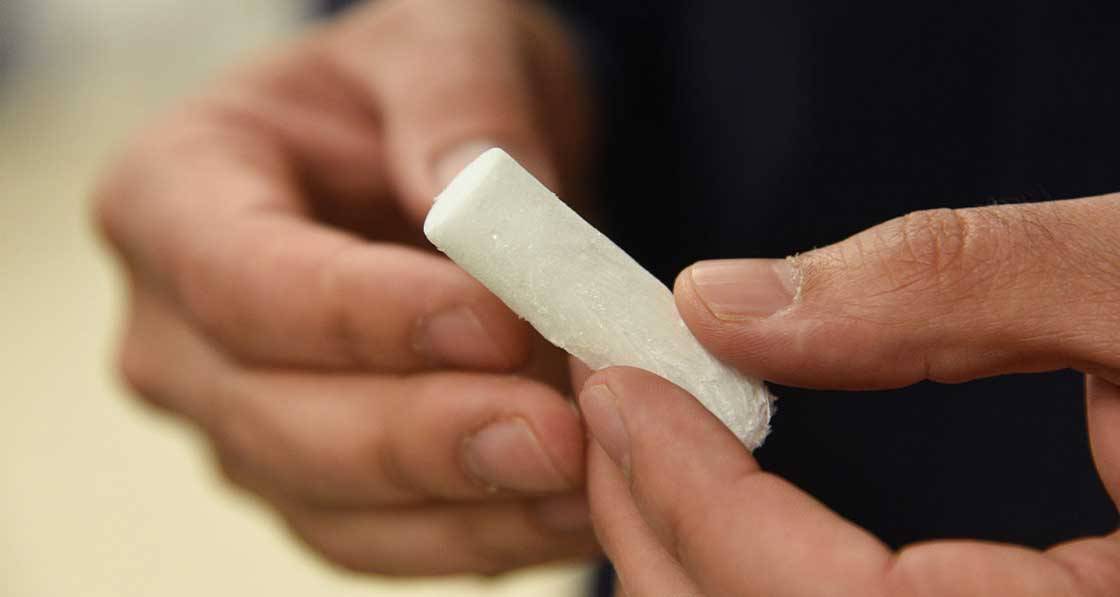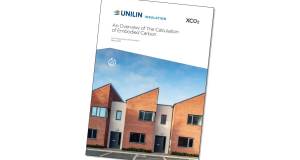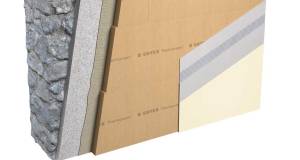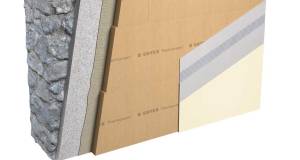
- Product News
- Posted
Researchers develop plant-based foam insulation
This article was originally published in issue 30 of Passive House Plus magazine. Want immediate access to all back issues and exclusive extra content? Click here to subscribe for as little as €10, or click here to receive the next issue free of charge
The foam is mostly made from nanocrystals of cellulose, the most abundant plant material on earth. The researchers have also developed an environmentally friendly and simple manufacturing process to make the foam, using water as a solvent. The work, led by professors Amir Ameli and Xiao Zhang, is published in the journal Carbohydrate Polymers.
While other researchers have created cellulose-based foams, these plant-based versions typically haven’t performed as well as polystyrene. They are not as strong, don’t insulate as well, and degraded at higher temperatures and in humidity.
In their work, the WSU team created a material that is made of about 75% cellulose nanocrystals from wood pulp. They added polyvinyl alcohol, another polymer that bonds with the nanocellulose crystals and makes the resultant foams more elastic. The material that they created contains a uniform cellular structure, making it a good insulator.
For the first time, the researchers report, the plant-based material surpassed the insulation capabilities of polystyrene foam. It is also very lightweight and can support up to 200 times its weight without changing shape. It degrades well and burning it doesn’t produce polluting ash.
“We have used an easy method to make high-performance, composite foams based on nanocrystalline cellulose with an excellent combination of thermal insulation capability and mechanical properties,” Professor Ameli said. “Our results demonstrate the potential of renewable materials, such as nanocellulose, for high‑performance thermal insulation materials that can contribute to energy savings, less usage of petroleum-based materials, and reduction of adverse environmental impacts.”
“This is a fundamental demonstration of the potential of nanocrystalline cellulose as an important industrial material,” Professor Zhang said. “This promising material has many desirable properties, and to be able to transfer these properties to a bulk scale for the first time through this engineered approach is very exciting.”
The researchers are now developing formulations for stronger and more durable materials for practical applications. They are interested in incorporating low‑cost feedstocks to make a commercially viable product and considering how to move from laboratory to a real-world manufacturing scale.
Related items
-
 New Ejot profile cuts thermal bridging losses by 25mm insulation equivalent
New Ejot profile cuts thermal bridging losses by 25mm insulation equivalent -
 Ireland’s first 3D printed homes insulated with clay foam
Ireland’s first 3D printed homes insulated with clay foam -
 Unilin Ireland launches embodied carbon report
Unilin Ireland launches embodied carbon report -
 Ecological launches Retro EcoWall for internal wall insulation
Ecological launches Retro EcoWall for internal wall insulation -
 Xtratherm name changes to Unilin
Xtratherm name changes to Unilin -
 Ecological Building Systems launch Retro EcoWall for internal wall insulation
Ecological Building Systems launch Retro EcoWall for internal wall insulation

